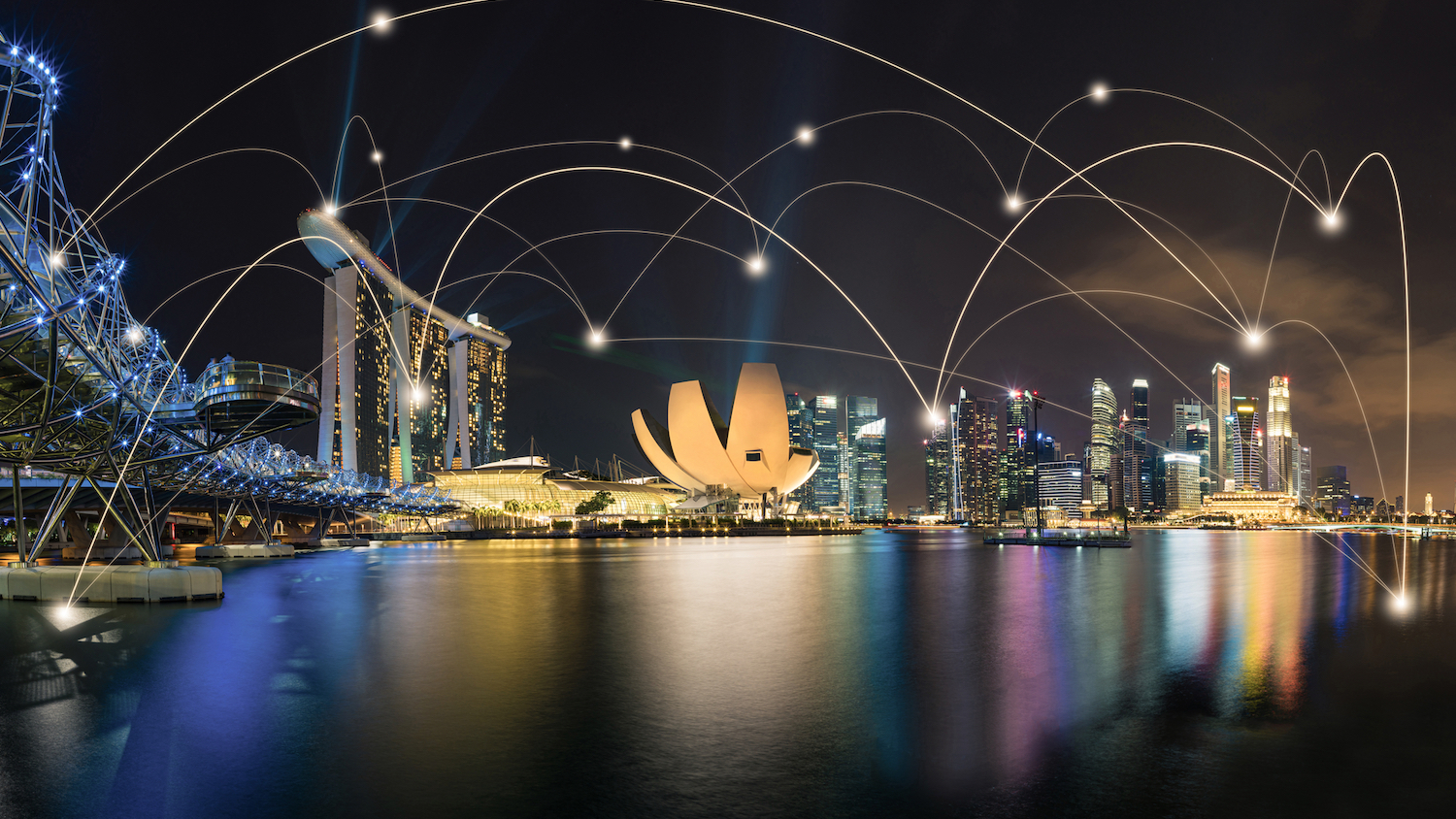
Aircraft armed with laser scanners patrolling the skies to create a digital copy of one of the most densely populated islands in the world? Twenty years ago, this would have sounded like science fiction. However, this is exactly what happened when the Singapore Land Authority (SLA) went about making the world’s first digital twin of a country. Bentley Systems’ Mark Coates, international director of public policy and advocacy, and Andrew Foster, regional director, energy, utilities and digital estates – Northern Europe, reflect on its genesis and its capabilities.
Singapore has needed to get used to flash flooding. However, torrential rain caused nine damaging floods throughout 2011, causing the nation to look at ways of tackling the problem.
In addition, as a small island and the world’s most densely populated nation with more than a million inhabitants, Singapore’s land use needs to be carefully considered.
To help make better use of Singapore’s scarcity of land and to figure out the areas most at risk from flooding, SLA started to create a 3D map of the country in 2012.

“The digital twin displays all of Singapore in a highly detailed 3D representation. It is exported and shared across various government agencies.”
GPS Lands Singapore later approached SLA with a plan to develop Virtual Singapore, a digital twin using software from Bentley Systems. It was then that the laser-scanning aircraft came into play: the mapping team using it to record terrain and surface information to a minute level of detail. Lasers mounted on vehicles also roamed Singapore’s streets, absorbing data to supplement the aerial imagery with street-level information.
GPS Lands Singapore then combined all these data sets into a single platform. It allows users to view and verify information to help inform and improve urban planning and design.
Completed earlier this year, Virtual Singapore is recognised as the first digital twin of a country.
The digital twin displays all of Singapore in a highly detailed 3D representation. It is exported and shared across various government agencies to help with asset management and decision-making, including detailed tree and green space management.
Going underground
Below ground, the SLA is now working on the next stage, a national subsurface digital twin of Singapore.
Almost all the city state’s utilities are buried underground to free up valuable above-ground space for other purposes. However, Singapore’s ongoing expansion – both above ground and below ground – means that even the subterranean space is becoming increasingly scarce.
This level of complexity increases the challenges and costs faced by government agencies and utility companies every time they need to develop a new project. It also significantly increases the risk of damaging an underground asset during construction or excavation work.
Capturing and maintaining reliable information about underground utilities has several benefits. Land above ground and below ground can be managed better and used more efficiently. There are also fewer risks around the planning and delivery of infrastructure, and the clarity means that there is minimal disruption to services and increased safety during engineering works.
“The evolving digital twin can help overcome other challenges as the nation continues to grow and expand.”
Aside from some of the more practical uses around the management of Singapore’s land, the evolving digital twin can help overcome other challenges as the nation continues to grow and expand.
Working with phone and internet providers, the map can help examine the coverage of phone networks. This will provide realistic visualisation of areas suffering from poor coverage to help inform and influence the best locations for phone masts and power lines.
Incorporating real-time data, the map can also assist emergency services with disaster planning and enable them to simulate evacuation scenarios and the impact of crowd dispersion.
The map can also analyse transport flows and pedestrian movements to prevent bottlenecks and ensure a more efficient flow of movement around the city.
Collaboration is key
Virtual Singapore has two aspects that make it so significant and influential. First, the level of technological ingenuity and detail enables it to be such an accurate and evolving resource. Second, and perhaps most importantly for its long-term use, the map is open and collaborative.
Accessible to the public, as well as private, government, and research sectors, Virtual Singapore has the potential to stimulate a wave of innovation and integration in the design and development of smart cities. By capturing a raft of data, Virtual Singapore can also ensure construction and infrastructure lessons are learned and shared before they pose extensive, and often expensive, urban planning problems, enabling planners to design and build a better country.
The Singapore project might be one of the most dramatic implementations of digital twin technology, but it is far from unique. Companies and governments across the world are realising the vast potential that digital twins have to allow complex and extensive counterfactual testing – with far lower ongoing costs, and far less environmental impact, than more traditional methods.
Don’t miss out on BIM and digital construction news: sign up to receive the BIMplus newsletter.











